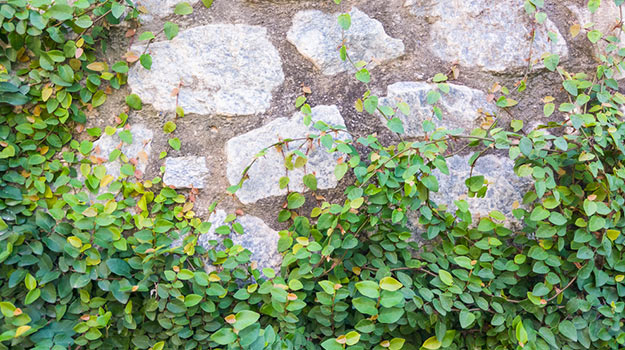
What are invasive plants and why are they such a huge problem? An invasive plant is a bully that reproduces rapidly, matures quickly, grows aggressively, and crowds out more well-behaved plants.
Most invasive plant species are introduced from other regions either intentionally or accidentally. You may hear them referred to as “exotics” or “aliens.”
Most invasive plants are non-native, but don’t assume that all introduced plants are bad. Good examples of beneficial non-natives include wheat, originally cultivated in the Fertile Crescent; and tulips, imported to Holland from Turkey in the sixteenth century.
How Invasive Plants Cause Problems
Invasive plants compete with native plants for moisture, nutrients, sunlight and growing space. Unlike native plants that have evolved in a particular region over centuries, growth of invasive plants isn’t naturally limited by disease, pests or environmental conditions.
Native plants aren’t always ugly; in fact, many are beautiful (which is often why they were transported to their new home in the first place). However, no matter how pretty they are, they can rapidly overcome entire ecosystems.
Invasive plants reduce habitat for native animals, insects and birds that have evolved along with native plants. Biologists estimate that invasive plants are largely responsible for significant declines in numbers of native plants and animals.
Non-native species are able to reproduce like crazy in nearly any soil, often by producing huge numbers of seeds that spread by various means, including people, animals, wind and water. Many spread by underground runners, rhizomes, or aggressive root systems.
Many invasive species lack deep roots, while native plants tend to have fibrous, spreading root systems that stabilize the soil. When invasive plants replace natives, there is high potential for soil erosion and increased risk of wildfires.
Invasive species often prevent growth of trees and other vegetation along riparian areas. Vegetation regulates the flow of water, filters sediment, stabilizes soil, fosters habitat for wildlife and creates shade that moderates water temperature.
In the United States, the cost to the economy is estimated at a whopping $120 billion every year, due primarily to loss of crops, livestock and damage to property.
What can Gardeners do?
- Don’t plant invasive species. Even if you are a careful gardener, exotic plants can easily escape into the surrounding environment.
- Keep in mind that invasiveness varies from place to place. For example, English ivy is extremely invasive in the Pacific Northwest but perfectly benign in areas with drier climates. If you’re unsure about invasive plants in your area, consult your local Cooperative Extension office.
- Choose plants that are native to your region. Native plants are adapted to the environment and natural controls prevent them from becoming thugs.
- Scout your garden regularly. If you notice invasive plants, remove them immediately. If you are unable to pull them, mow the plants. Never let them develop flowers and go to seed. Unfortunately, herbicides are sometimes required.
- When you remove an invasive species, replace it with a native or noninvasive plant. Invasive plants love disturbed soil and they are likely to return to empty spots with a vengeance.



